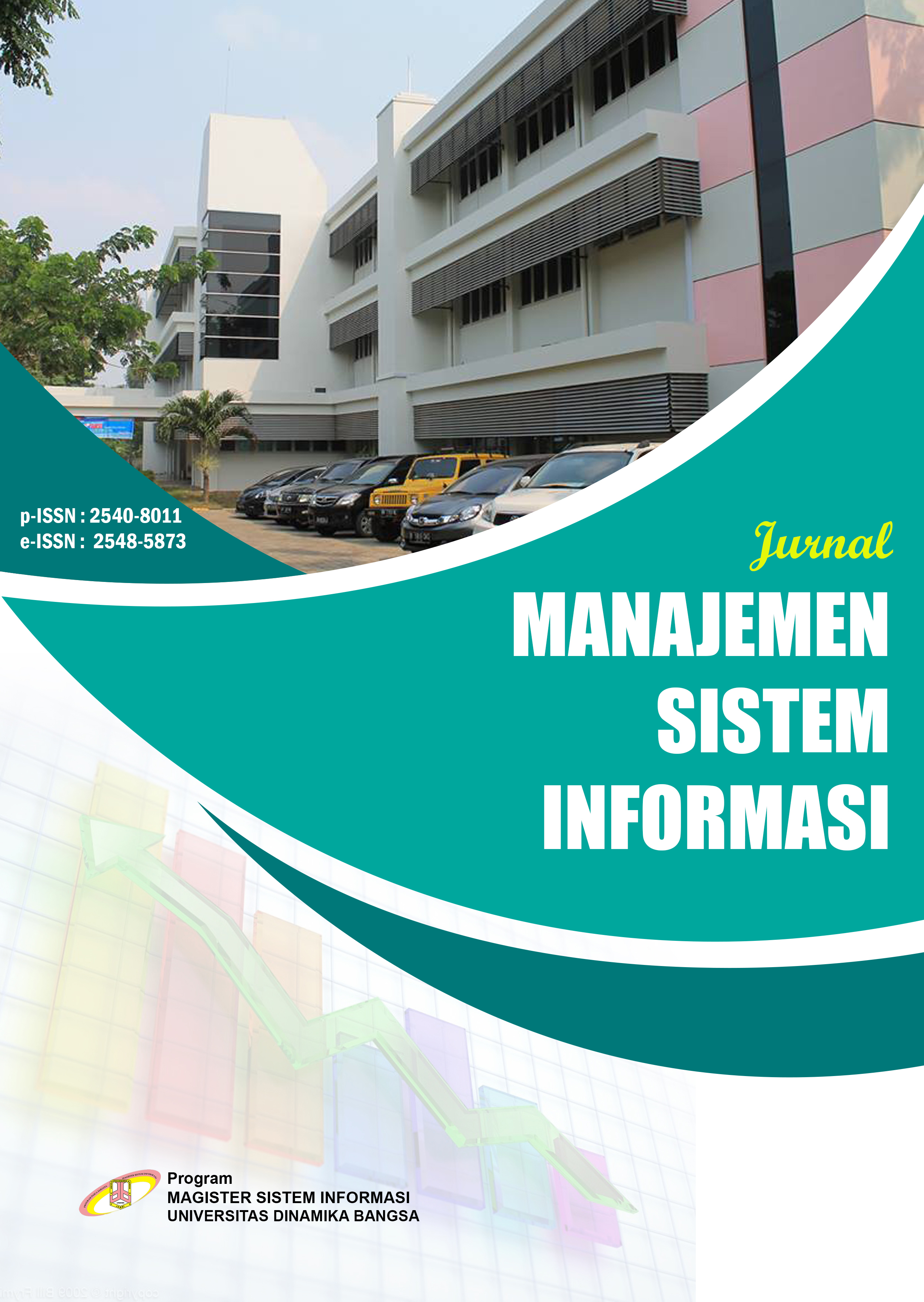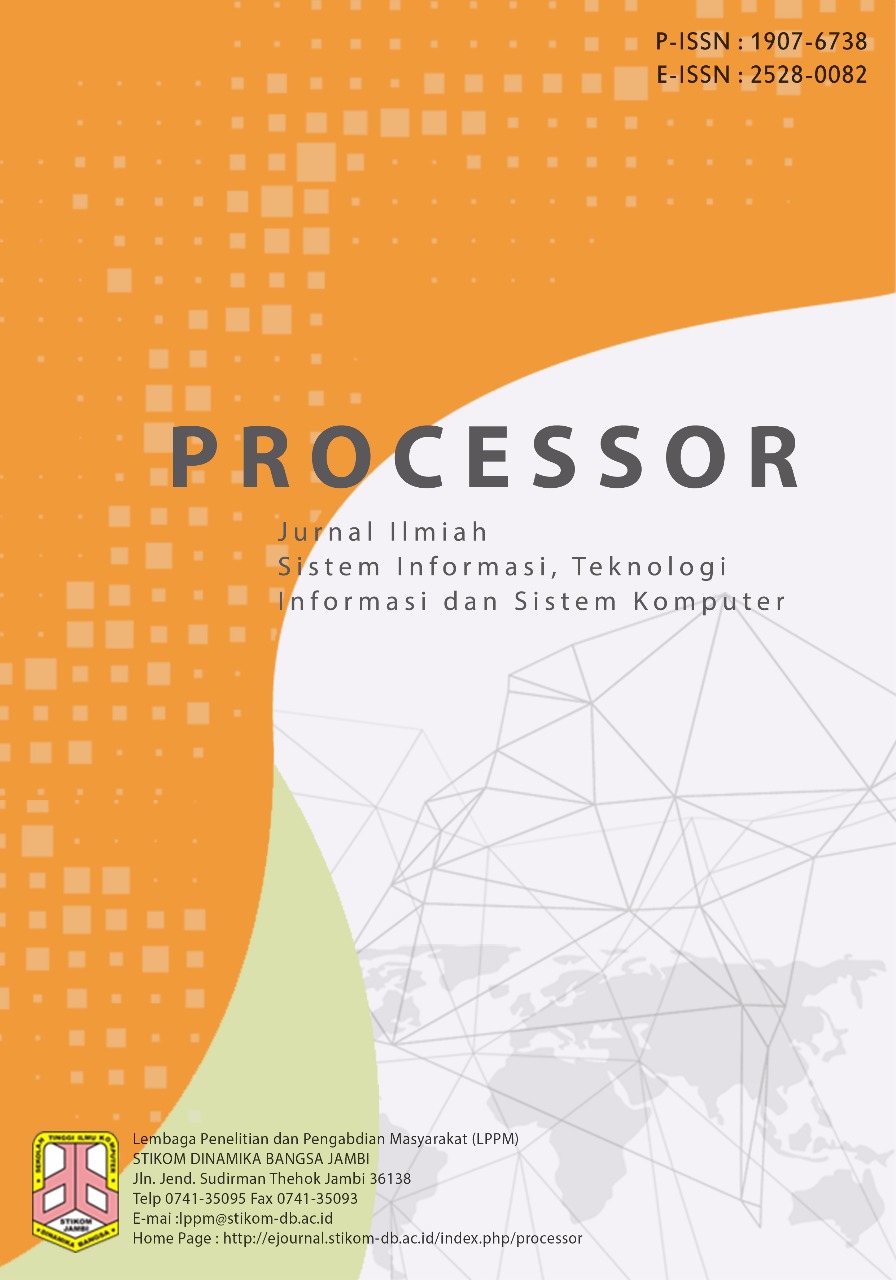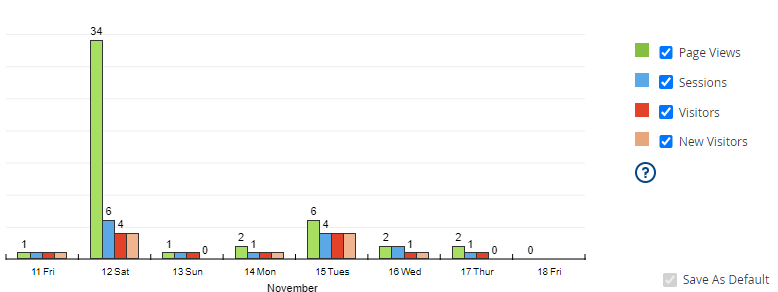Analisis Pemanfaatan LMS (Learning Management System) Pada UPBJJ-UT Jambi
DOI:
https://doi.org/10.33998/jurnalmsi.2023.8.4.1521Abstrak
Universitas Terbuka (UT) utilizes E-Learning to support its learning services commonly referred to as tutorials. In supporting the implementation of this tutorial, UT created a web-based application called LMS (Learning Management System) application. This application is a companion for tutorial activities. When monitoring tutorials, there are still many students who say that they have not fully used this application. Until now, there has never been research and evaluation and analysis of the perception of acceptance of LMS applications, especially for Pendas program students. This research aims to analyze what factors influence the level of acceptance and use of E-Learning. This research model uses Technology Acceptance Model (TAM) theory. Data analysis uses Partial Least Square method on Structural Equation Modeling (PLS-SEM) by using SmartPLS software as the research model. The number of respondents was 290 students, consisting of students majoring in PGSD and PGPAUD at UPBJJ-UT Jambi. The results of this study showed six of the seven hypotheses showed positive and significant results and only one hypothesis was rejected or insignificant. This shows that the LMS application has a positive and significant influence in helping students in tutorial activities.
Unduhan
Referensi
Arizqi., 2019. Implementasi Model Modifikasi Technology Acceptance Model (Tam) Pada Sistem Informasi Akademik (Sia) Di Universitas Swasta Kota Semarang Jawa Tengah. Jurnal Manajemen Teknologi, 138-155.
Chin, W. W., 1998. The Partial Least Squares Aproach to Structural Equation Modeling. Modern Methods for Business Research, 295-336.
Chuttur, M. 2009. Overview Of The Technology Acceptance Model: Origins, Developments And Future Directions. Ais Electronic Library (Aisel), 9-37.
Bradley, J., 2009. The Technology Acceptance Model And Other User Acceptance Theories. Researchgate, 18.
Davis, F. D., 1985. A Technology Acceptance Model For Empirically Testing New End-User. Massachusetts: Massachusetts Institute Of Technology.
Davis, F.D., Bagozzi, R.P. & Warshaw, P.R., 1989. User Acceptance of Computer Technology : A Comparison of Two Theoretical Models. Management Science, 35(82015): 982–1003.
Elkins, D., & Pinder, D., 2015. E-Learning Fundamentals A Practical Guide. Alexandria: Association For Talent Development (Atd) Press.
Ellis, R. K., 2009. A Field Guide To Learning Management Systems. Alexandria, Virginia: American Society For Training And Development.
Delone, W., & Mclean, E., 2003. The Delone And Mclean Model Of Information Systems Success: A Ten-Year Update. Journal Of Management Information Systems, 9-30
Fishbein, M., & Ajzen, I., 1975. Belief, Attitude, Intention And Behavior : An Introduction To Theory And Research. Reading, Massachusetts: Addison-Wesley.
Fecira, D., & Abdullah, T. K., 2020. Analisis Penerimaan E-Learning Menggunakan Technology Acceptance Model (Tam). Intelektiva : Jurnal Ekonomi, Sosial & Humaniora, 35-50.
Ghozali, I., 2014. Structural Equation Modeling Metode Alternatif Dengan Partial Least Squares (PLS). Semarang: Badan Penerbit Universitas Diponegoro.
Hartley, D. E., 2001. Selling E-Learning. Alexandria, Virginia: American Society For Training & Development.
Hair, E., Halle, T., Terry-Humen, E., Lavelle, B., & Calkins, J., 2006. Children's School Readiness In The Ecls-K: Predictions To Academic, Health, And Social Outcomes In First Grade. Early Childhood Research Quarterly, 431-454.
Iqbal, J., & Arisman., 2018. Metode Pembelajaran E-Learning Menggunakan Technology Acceptance Modelling (TAM) Untuk Pembelajaran Akuntansi. Jurnal InFestasi Vol.14 (2), 116–125.
Juhri, K. Juhri dan Dewi, C. K., 2017. Kepercayaan Dan Penerimaan Layanan Mobile Money T-Cash di Bandung denganPendekatan Technology Acceptance Model (TAM), J.Pro Bisnis.
Jogiyanto, H. M., 2008. Metodologi Penelitian Sistem Informasi. Yogyakarta: Cv. Andi Offset.
Kementerian Pendidikan dan Kebudayaan, 2013. Permendikbud No. 109 tentang Penyelenggaraan Pendidikan Jarak Jauh pada Pendidikan Tinggi.
Komendangi, F. K., Molenaar, R., & Lengkey, L., 2017. Analisis Dan Perancangan Aplikasi E-Learning Berbasis Learning Management System (Lms) Moodle Di Program Studi Teknik Pertanian Universitas Sam Ratulangi. Ejurnal Unsrat, 1-11.
Lewis, W., Agarwal, R., & Sambamurthi, V., 2003. Sourche Of Influence On Beliefs About Information Technology Use, An Empirica Study Of Knowledge Worker. Mis Quarterly, 316-328.
Lee, S. S., & Wella.,2018. Analisis Technology Acceptance Model Penggunaan E-Learning Pada Mahasiswa Studi Kasus: Universitas Multimedia Nusantara. Ultima Infosys, 70-78.
Musriannur, M. H., Yasirandi, R., & Oktaria, D., 2021. Pengukuran Dan Analisis Penerimaan Lms Sebagai Media Belajar Online Menggunakan Technology Acceptance Model Di Universitas Telkom. E-Proceeding Of Engineering, 11505-11519.
Rosenberg, M. J., 2001. E-Learning: Strategies For Delivering Knowledge In The Digital Age. Sciencetific Research.
Rahayu, F. S., Setyohadi, D. B., & Palyama, D., 2017. Analisis Penerimaan E-Learning Menggunakan Technology Acceptance Model (Tam) (Studi Kasus: Universitas Atma Jaya Yogyakarta). Jurnal Terapan Teknologi Informasi, 87-98.
Straub, D., Keil, M., & Brenner, W., 1997. Testing The Technology Acceptance Model Across Cultures: A Three Country Study. Information & Management, 1-11.
Setiawan, N., Nurhadi, M., Djuwito, & Diptyana, P., 2018. Analisis Perilaku Penggunaan Learning Management System. E-Jurnal: Spirit Pro Patria, 138-153.
Sugiyono, 2010. Metode Penelitian Pendidikan Pendekatan Kuantitatif, Kualitatif Dan R&D. Bandung: Alfabeta.

















